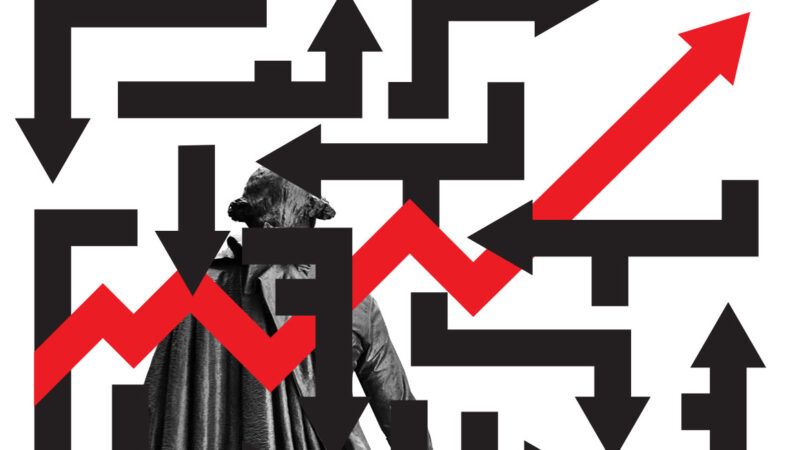Is High Inflation the New Normal?
With inflation running above 7 percent, we are experiencing the strongest price pressures in nearly 40 years.

During the second half of 2021, economists debated whether inflation in the U.S. would be "permanent" or "transitory." Inflation hawks argued that massive fiscal and monetary stimulus was the obvious cause of price hikes. Inflation doves replied that rising prices were primarily due to pandemic-related supply chain disruptions. In early December, the debate suddenly shifted: Federal Reserve Chairman Jerome Powell told legislators, "it's probably time to retire that word"—transitory—and the hawks took a victory lap.
It is easy to see why Powell was concerned. With inflation running at 7 percent, we are experiencing the strongest price pressures in nearly 40 years. But inflation is tough to fully explain and even harder to predict.
Partisans in the inflation battle frequently fail to acknowledge that their stories are not mutually exclusive. If public policy boosts demand while production bottlenecks hamper supply, there is no question about what happens to prices—up they go. Digging further into the debate provides additional reasons to eschew confident assertions.
Orthodox economic theory says fiscal and monetary stimulus can increase total spending, or what economists call aggregate demand. We've certainly had lots of both. The American Rescue Plan Act, signed into law by President Joe Biden on March 11, 2021, had a top-line figure of $1.9 trillion. Expansionary fiscal policy, meaning increased government spending to boost output and employment, requires deficit spending, because financing outlays with taxes blunts the effects on aggregate demand.
At the same time, the Fed's balance sheet has surged. Total assets held by the central bank grew from roughly $4 trillion in early 2020 to $8.9 trillion as of late January. Driven by these asset purchases, the M2 money supply—cash, checking accounts, and "near monies," such as savings accounts and money market mutual funds—grew from $15.5 trillion in early 2020 to more than $21.6 trillion today. So Americans definitely have more money to spend.
It is also true that fiscal and monetary expansion don't boost supply of the goods people might want to buy with that money. Widespread COVID-prevention policies threw a wrench into the economy's gears. Transportation gridlocks on sea, on land, and in the air make production and distribution harder. Major inputs, such as semiconductors, are frustratingly scarce. There are also frictions in labor markets, such as recently boosted unemployment benefits and union disputes over vaccine mandates. The combined effect is rising prices, independent from demand considerations.
A supply-and-demand double whammy could explain inflation. But both stories have problems.
On the demand side, all that stimulus might not be as expansionary as it appears. "We know from experience that budget deficits, by themselves, are not very inflationary," writes Scott Sumner, the doyen of the market monetarist school, in his new book The Money Illusion (University of Chicago Press). Sumner cites the absence of major inflation during the Reagan and Obama administrations, both of which presided over growing budget deficits.
Nor was money especially loose during the early stages of the pandemic. As the money supply ballooned, the velocity of money—its average rate of turnover—cratered. People held on to that extra money. According to data from the Federal Reserve Bank of St. Louis, money demand increased by 22.5 percent from the fourth quarter of 2019 to the first quarter of 2020. Velocity remained depressed as the money supply continued growing. Since supply outpaced demand, monetary conditions did loosen. But Fed policy did not open the liquidity floodgates, as many initially supposed.
As for the supply of goods, congested production and slowed distribution clearly are making inflation worse. But this explanation is prone to just-so stories. Supply conditions vary greatly by sector. Aggregate data, constructed to get a fuller picture, is not as clean on the supply side as on the demand side.
We also have to consider politics. Behind the inflexible insistence that supply problems matter most lies a possibly partisan reluctance to indict policy makers and technocrats.
The doves are down, but they are not out for the count. Market inflation expectations peaked in mid-November. As of January, bond traders forecast 2.8 percent per year for the next five years, meaning they are not convinced runaway inflation is our destiny. "Predictions are hard, especially about the future," a wise man once said. Much will depend on how fast supply constraints loosen and Fed policy tightens.




Show Comments (20)